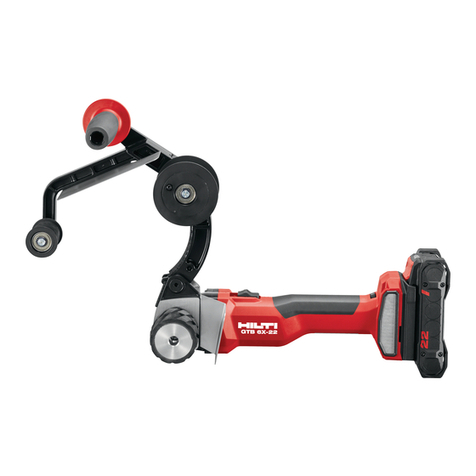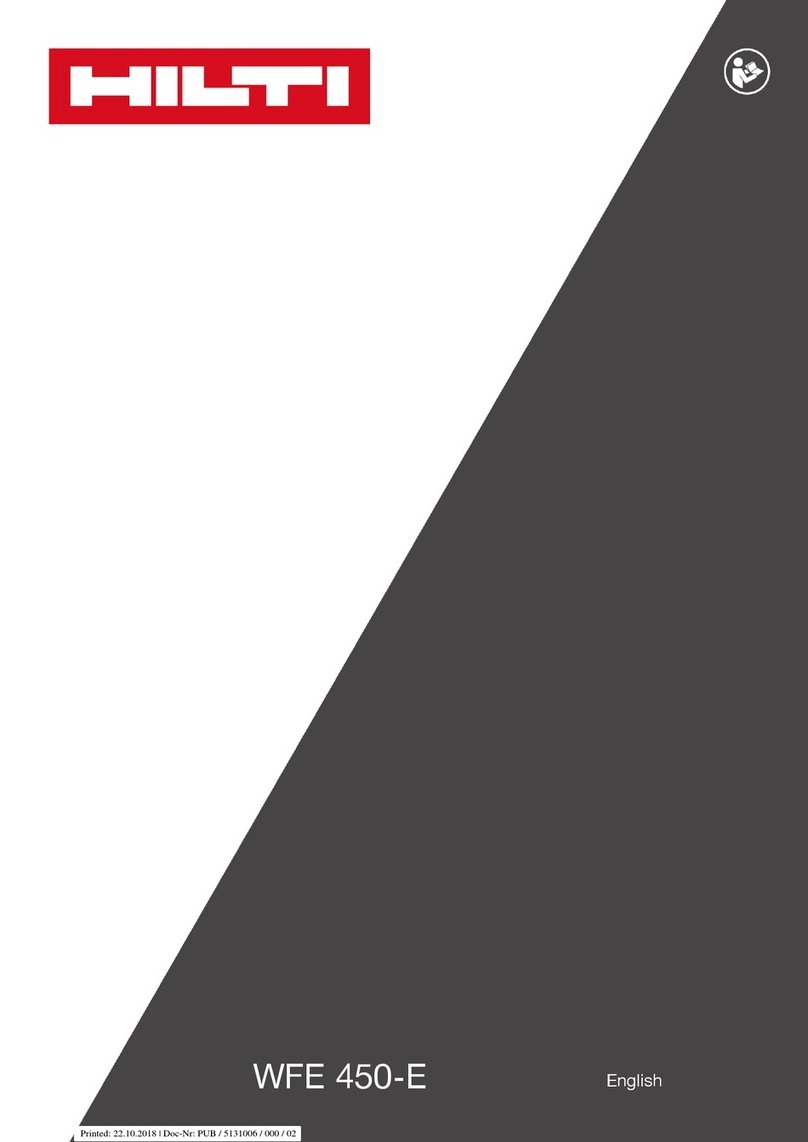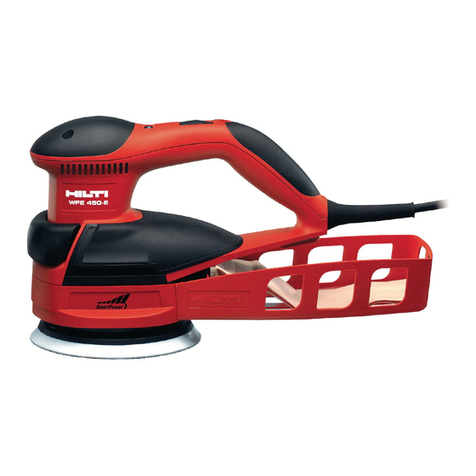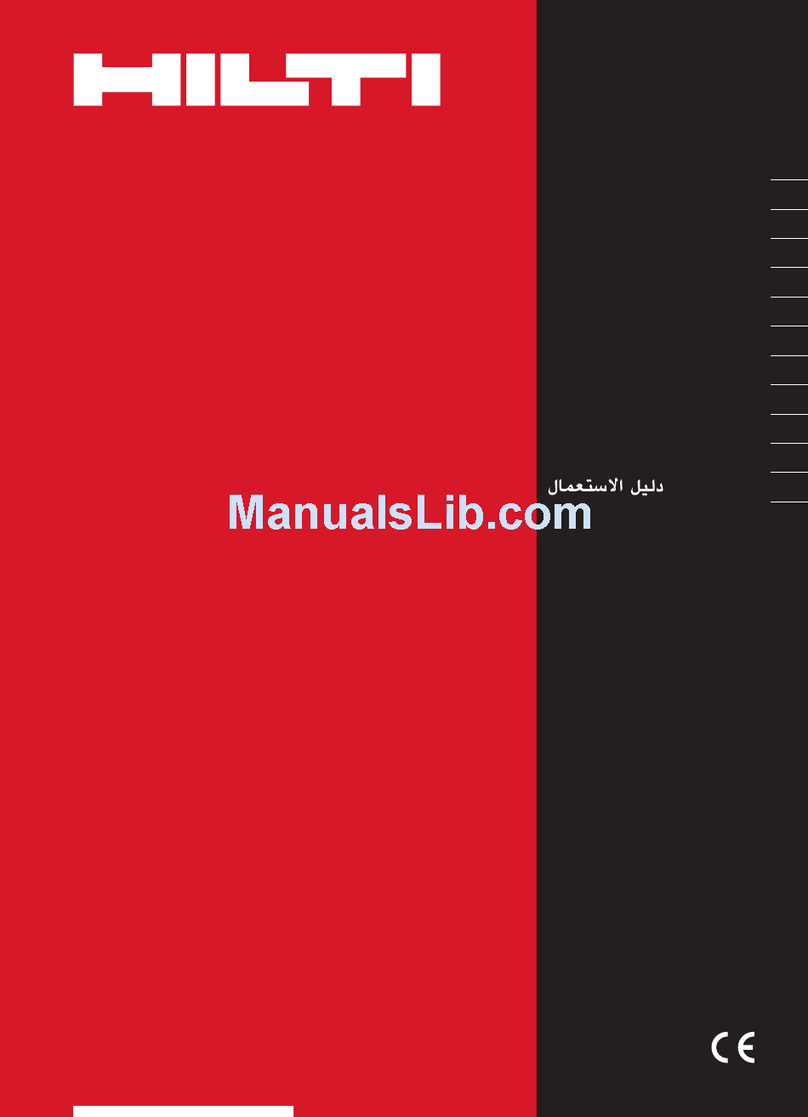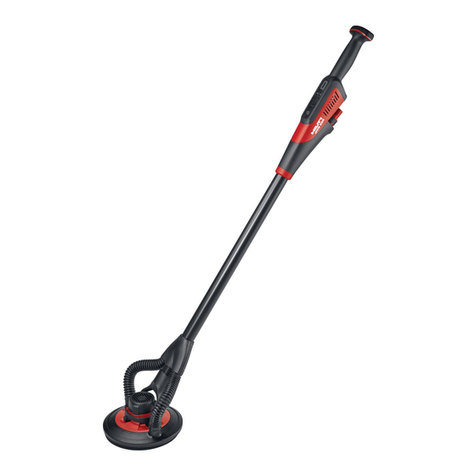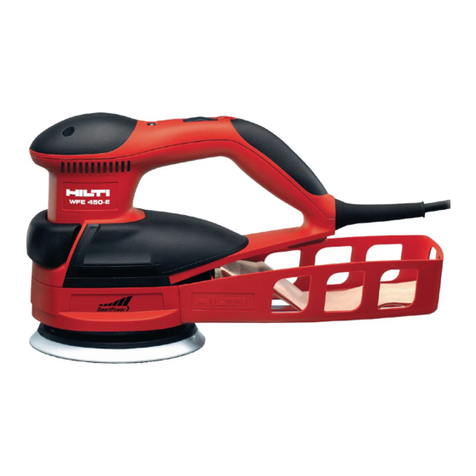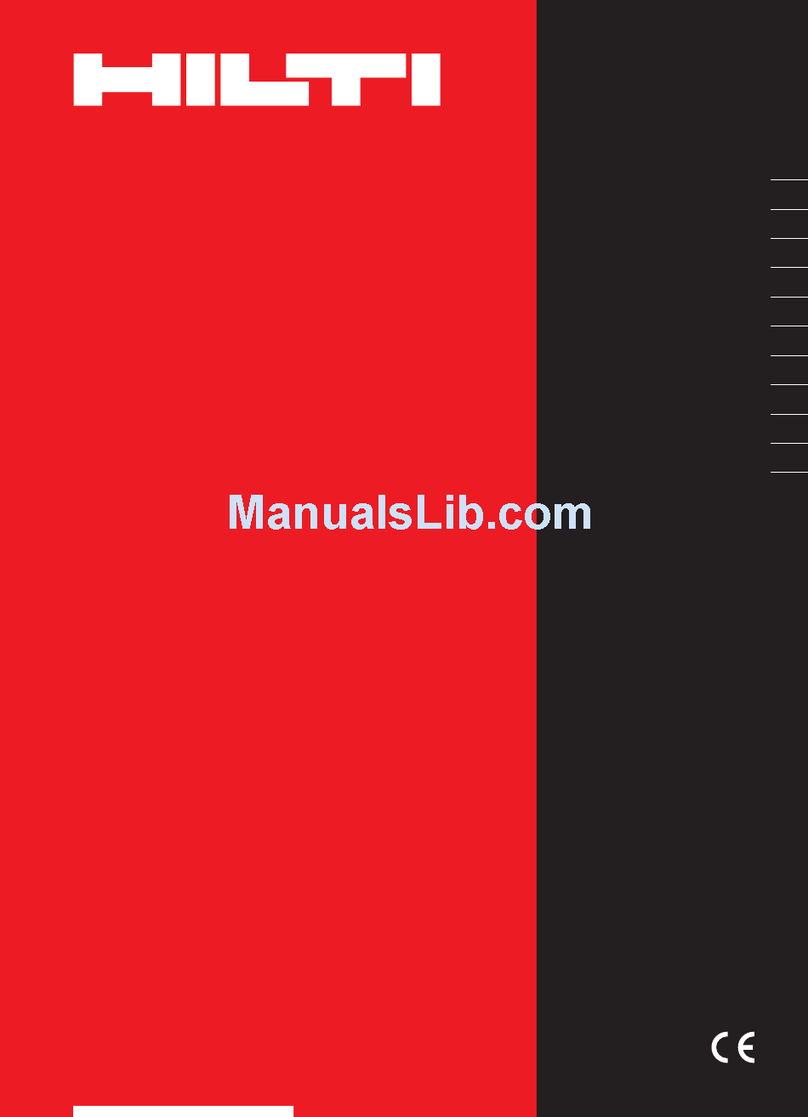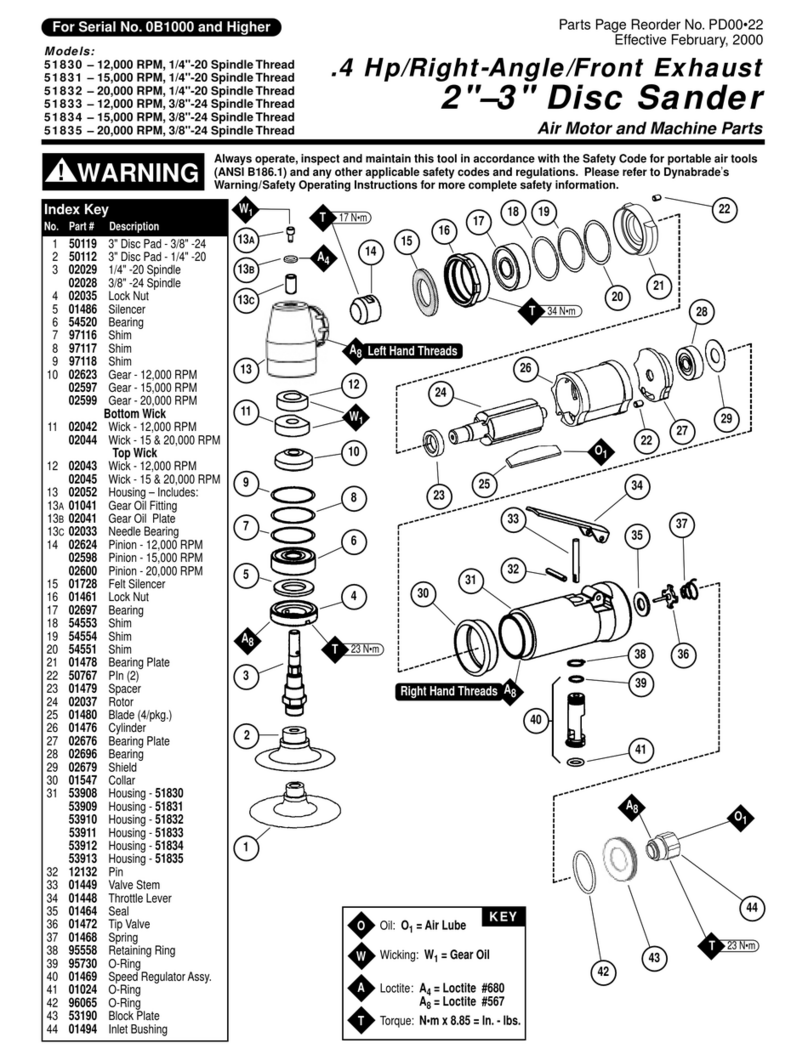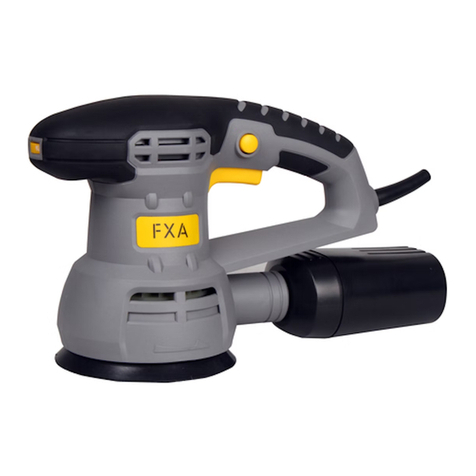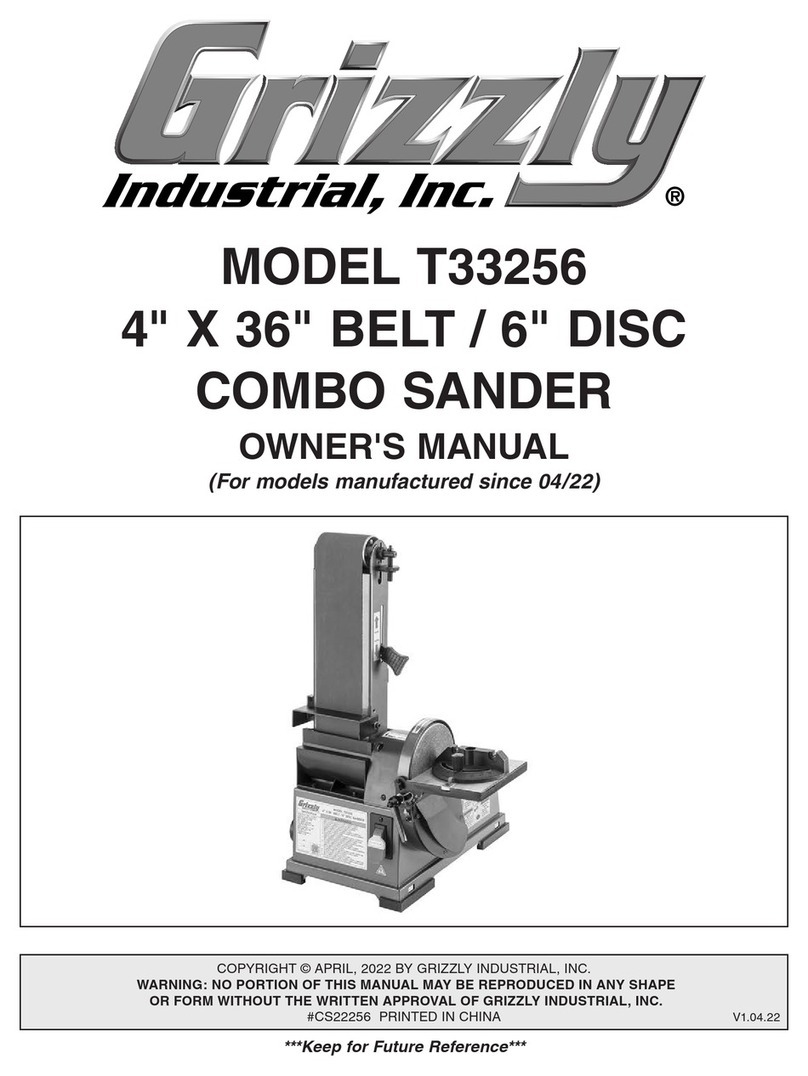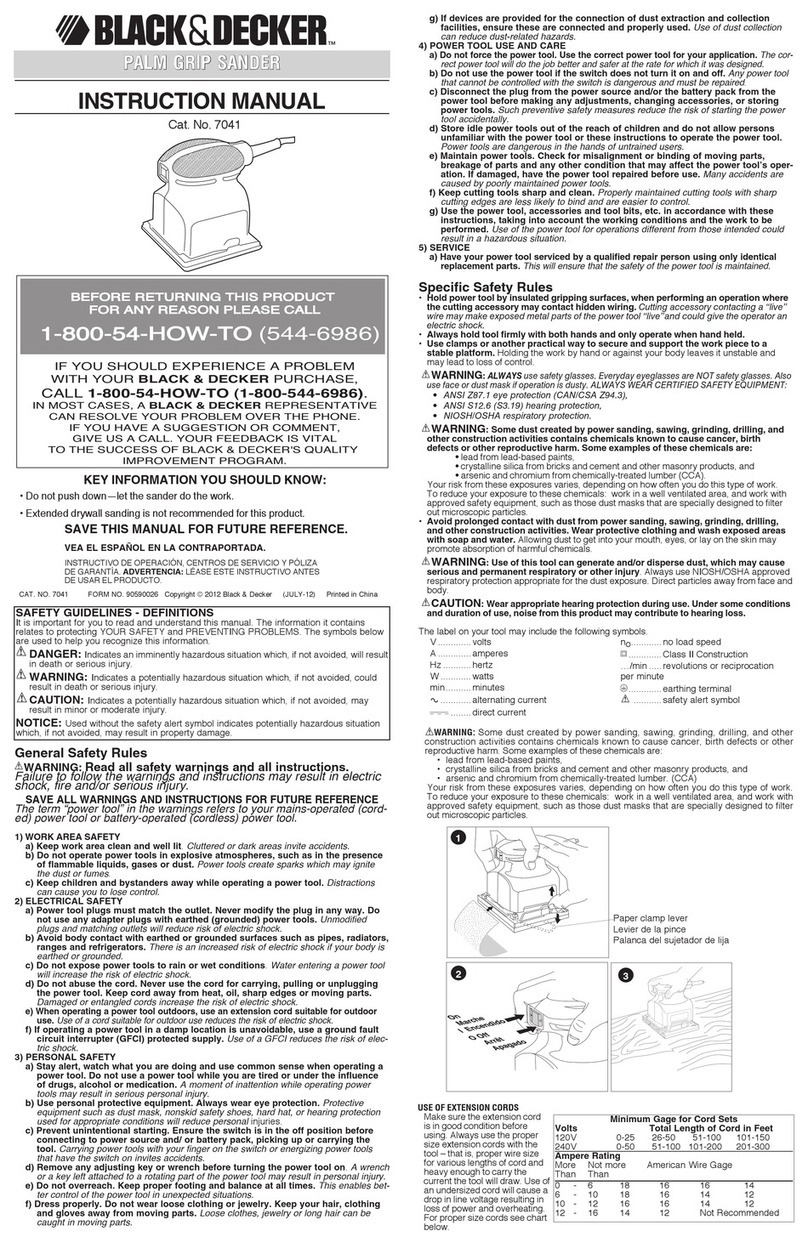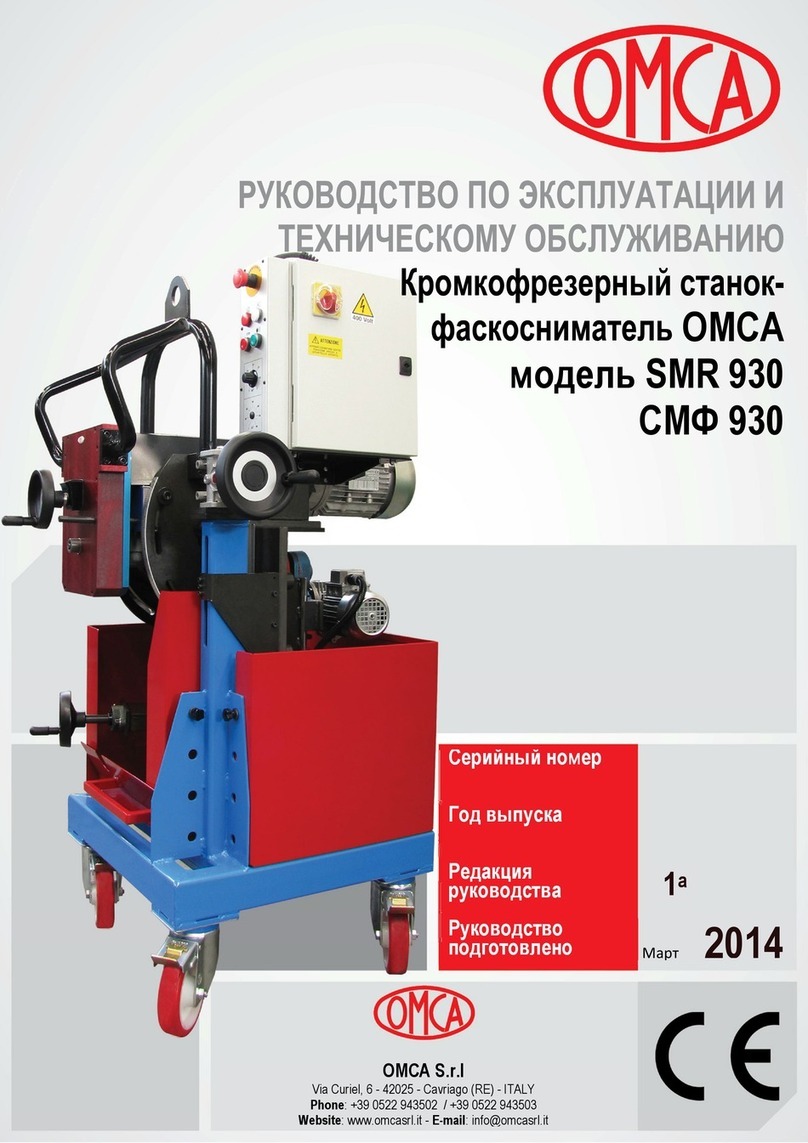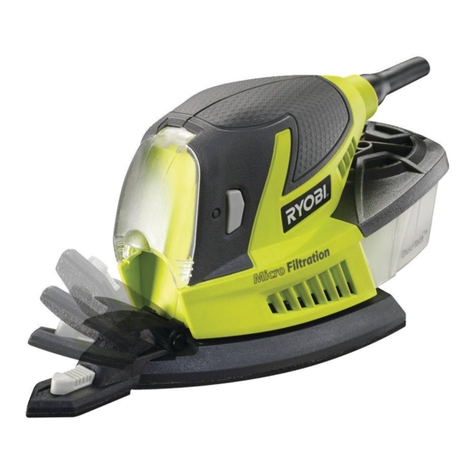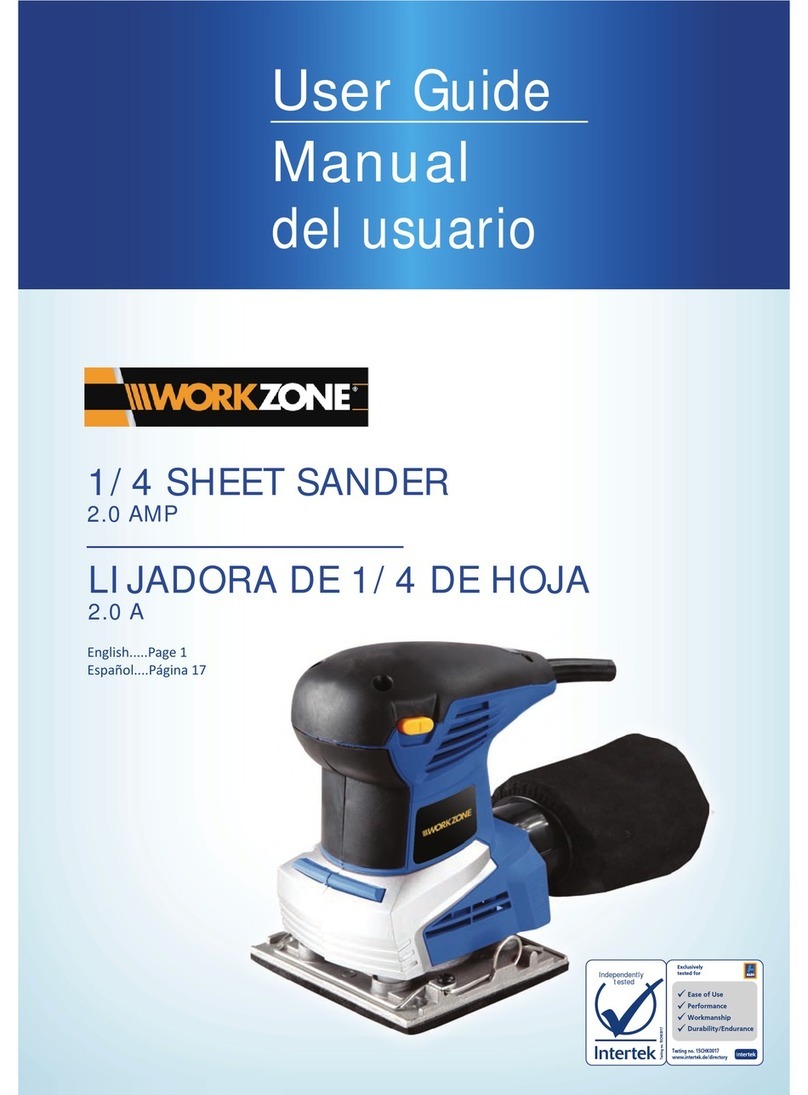8
alignment or binding of moving parts,
breakage of parts and any other con-
dition that may affect the power tool's
operation. If damaged, have the pow-
er tool repaired before use.
Many acci-
dents are caused by poorly maintained
power tools.
f) Keep cutting tools sharp and clean.
Properly maintained cutting tools with
sharp cutting edges are less likely to
bind and are easier to control.
g) Use the power tool, accessories and
tool bits etc., in accordance with these
instructions and in the manner intend-
ed for the particular type of power tool,
taking into account the working con-
ditions and the work to be performed.
Use of the power tool for operations
different from those intended could
result in a hazardous situation.
1.1.5 Service
a) Have your power tool serviced by a
qualified repair person using only gen-
uine replacement parts.
This will ensure
that the safety of the power tool is main-
tained.
1.2 Additional safety precautions
1.2.1 Personal safety
a) Wear ear protection.
Excessive noise
may lead to a loss of hearing.
b) Use the auxiliary handle supplied with
the tool.
Loss of control of the tool
may lead to injury.
c) Breathing protection must be worn
when the tool is used without a dust
removal system for work that creates
dust.
d) To avoid tripping and falling when
working, always lead the sypply cord,
extension cord and dust extraction
hose away tho the rear.
e) Dust from material such as paint con-
taining lead, some wood species, min-
erals and metal may be harmful. Con-
tact with or inhalation of the dust may
cause allergic reactions and/or respi-
ratory diseases to the operator or
bystanders. Certain kinds of dust are
classified as carcinogenic such as oak
and beech dust especially in conjunction
with additives for wood conditioning
(chromate, wood preservative). Mate-
rial containing asbestos must only be
treated by specialists. Where the use
of a dust extraction device is possi-
ble it shall be used. To achieve a high
level of dust collection, use a suitable
vacuum cleaner of the type recom-
mended by Hilti for wood dust and/or
mineral dust together with this tool.
Ensure that the workplace is well ven-
tilated. The use of a dust mask of fil-
ter class P2 is recommended. Follow
national requirements for the mate-
rials you want to work with.
f) The tool is not intended for use by chil-
dren, by debilitated persons or those
who have received no instruction or
training.
g) Children must be instructed not to play
with the tool.
1.2.2 Power tool use and care
a) Secure the workpiece. Use clamps or
a vice to hold the workpiece in place.
The workpiece is thus held more secure-
ly than by hand and both hands remain
free to operate the tool.
b) In the event of a power faillure, switch
the tool off and unplug the supply cord.
This prevents inadvertent starting when
the power returns.
cb) Hold tool by insulated gripping sur-
faces when performing an operation
where the cutting tool may contact
hidden wiring or its own cord. Con-
tact with a “live” wire will make exposed
metal parts of the tool “live” and shock
the operator.
1.2.3 Electrical safety
a) Check the condition of the supply cord
and its plug connections and have it
replaced by a qualified electrician if
damage is found. Check the condition
of the extension cord and replace it if
damage is found. Do not touch the
supply in the event of it suffering dam-
age while working. Disconnect the
supply cord plug from the socket
. Dam-
aged supply cords and extension cords
present a risk of electric shock.
b) Dirty or dusty electric tools should
thus be checked at a Hilti service
center at regular intervals, especially
if used frequently for working on con-
ductive materials. Dust (especially
dust from conductive materials) or
dampness adhering to the surface of
the tool may, under unfavorable con-
ditions, present a risk of electric shock.
1.2.4 Work area
a) Ensure that the workplace is well lit.
b) Ensure that the workplace is well ven-
tilated.
Poorly ventilated workplaces may be
injurious to the health due to exposeure
to dust.
1.2.5 Personal protective equipment
The user and any other persons in the
vicinity must wear suitable eye protec-
tion, ear protection and protective gloves
when the tool is in use. Breathing pro-
tection must be worn if no dust removal
system is used.
Wear ear
protection
Wear
protective
gloves
Wear
breathing
protection
Wear eye
protection
